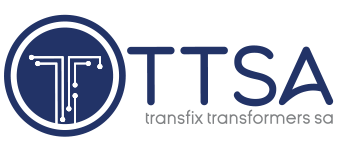The South African Independent Power Producer Association (SAIPPA) expects to meet with Eskom later this month to discuss its concern that the State-owned entity’s proposed renewables projects may not be subjected to the same grid-access rules that are currently applied to independent power producers (IPPs). The association has also written to the Competition Commission highlighting the risk for market-dominance abuse should Eskom be allowed to bypass the prevailing Interim Grid Connection Allocation Rules (IGCAR) when moving to develop new renewables assets in close proximity to coal stations that are scheduled for retirement in the coming years.
A joint letter sent to the Independent Power Producer Office (IPP Office) on September 23 by organisations representing local industry, raised several concerns about the prequalification process launched ahead of the inaugural Independent Transmission Project (ITP) procurement programme. In the letter, the Powerline and Substation Association, the Steel and Engineering Industries Federation of Southern Africa and the Manufacturing Circle described the technical and financial criteria included …
Having participated in Electra Mining Africa 2024 (EMA24), energy equipment and solutions provider CHINT, will be returning to the trade show in 2026, to connect with industry stakeholders, showcase its latest innovations, and strengthen its brand presence in the region, says CHINT regional sales director Burt Lei. “EMA presents a remarkable opportunity for us to demonstrate our commitment to innovation and sustainability in the energy sector. Our smart energy solutions are designed to meet the evolving needs of our customers and contribute to a more sustainable future. Building on this momentum, we are excited to return in 2026 to engage with an even broader audience, highlight our expanded product portfolio, and demonstrate our ongoing commitment to empowering Africa’s industrial and energy sectors.”
In the wake of separating its assets from former parent company Anglo American, platinum group metals (PGMs) mining company Valterra Platinum is setting the stage to further develop one of its most significant endowments, the Mogalakwena mine, in South Africa’s Limpopo province. Mogalakwena mine, “a mine within communities”, is nestled among 64 villages 30 km north-west of Mokopane. It is home to vast volumes of PGMs, with only 14% of the total reserve extracted over the past 30 years.
The Infrastructure Fund, a blended finance platform created through a partnership between the Development Bank of Southern Africa (DBSA), the National Treasury and Infrastructure South Africa, has secured a R550-million grant from Invest International to support the implementation of the City of Johannesburg’s (CoJ’s) Alternative Waste Treatment Technology (AWTT) project. Valued at about R5.7-billion, the AWTT project marks a significant milestone in South Africa’s transition towards sustainable waste management and renewable energy.
The South African Local Government Association (Salga) has warned that Eskom’s proposal to implement distribution agency agreements (DAAs) to curb growing municipal debt to the utility could be perceived as a backdoor takeover of municipal electricity distribution functions. Eskom outgoing CFO Calib Cassiem earlier this month proposed the use of DAAs and prepaid supply models as possible solutions to the growing municipal debt problem.
Energy security and affordability have become key policy considerations in many regions, particularly as the global energy transition has entered a more turbulent, complex phase, shaped by infrastructure realities and geopolitical risk, as well as decarbonisation ambitions.
Consultancy Boston Consulting Group (BCG) identifies seven macro shifts and four major implications raised by these shifts in a report called ‘The Energy Transition’s Next Chapter’.
A new report by the Centre for Development and Enterprise (CDE) calls for additional policy reforms to tackle the country’s “unemployment catastrophe”, which is excluding more than 12.5-million people who want to work from participating in the economy. As things stand, fewer than four in every ten working age adults is employed, the report shows.
Global renewable power capacity is predicted to increase by 4 600 GW, or more than double, by 2030, led by the rapid rise of solar PV, says intergovernmental organisation the International Energy Agency (IEA). Solar PV will account for about 80% of the global increase in renewable power capacity over the next five years, driven by low costs and faster permitting timeframes, the organisation says in its ‘Renewables 2025’ report.
A postponement from incorporating indirect carbon emissions into the European Union’s (EU’s) calculation of a product’s embedded emissions under its Carbon Border Adjustment Mechanism (CBAM) will provide something of a short-term reprieve to South African steel and aluminium exporters, which are heavily exposed to the measure. The EU intends implementing CBAM from January 1, 2026, and the postponement will continue until at least 2027.
INDUSTRY NEWS
- NERSA appoints Electricity Market Advisory Forum to guide power-market reformDecember 19, 2025 - 2:04 pm
- Eskom offers more details on envisaged roles of the NTCSA and the TSODecember 18, 2025 - 11:04 am
- NTCSA says any electricity deal to salvage Mozal must ensure its financial sustainabilityDecember 17, 2025 - 3:01 pm
WHERE TO FIND US
Address
9 Yellow Street
Botshabelo Industrial Area
Botshabelo, Free State
Call / Email Us
Tel: +27 (0) 61 956 6772
Email: info@transfix.co.za
